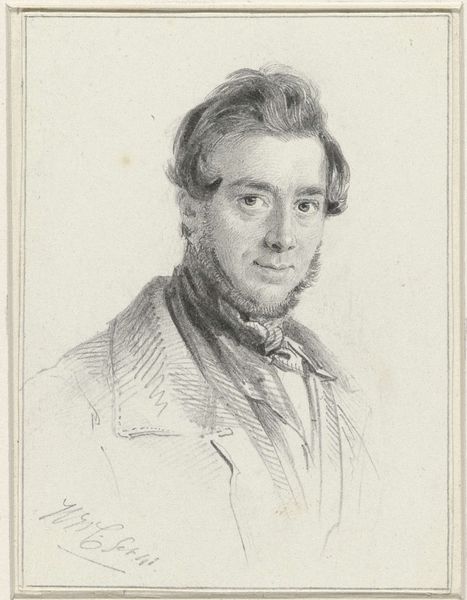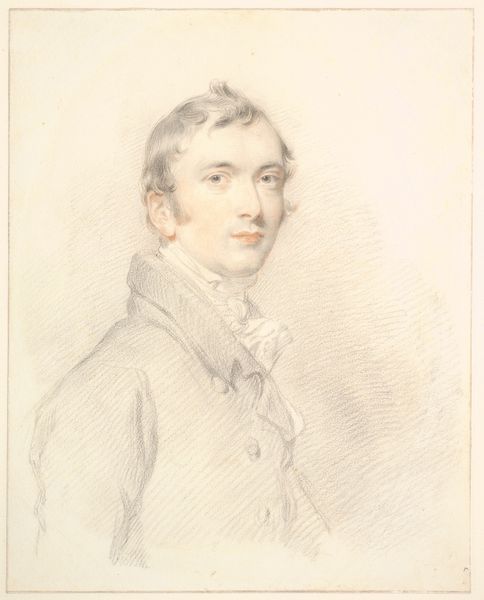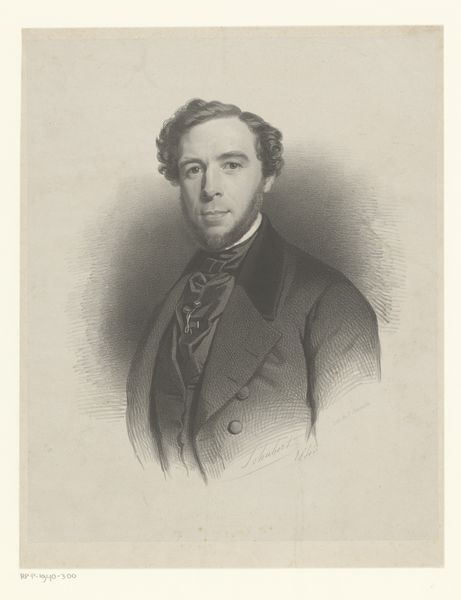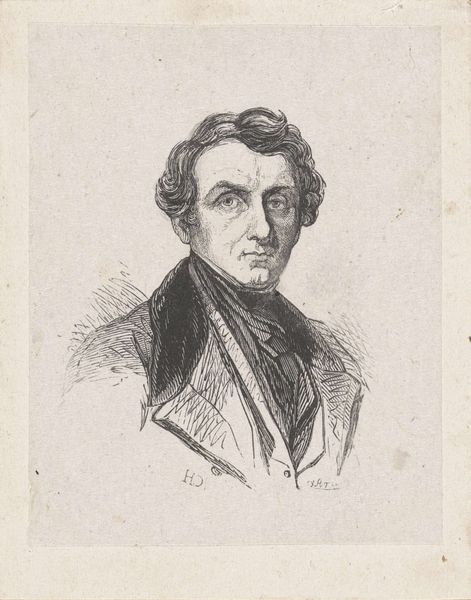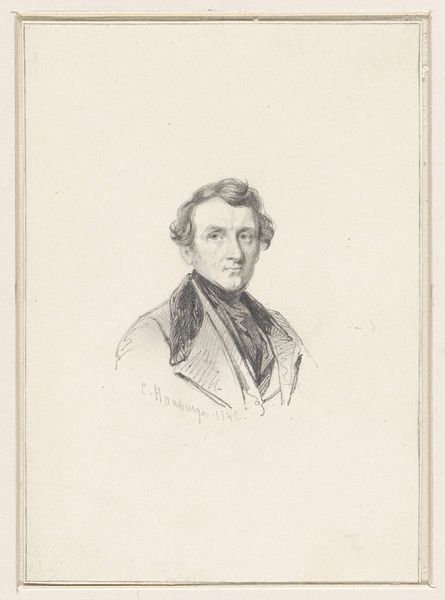
Dimensions: height 125 mm, width 96 mm
Copyright: Rijks Museum: Open Domain
Curator: Editor: This is "Self-Portrait" by Abraham van Pelt, dated sometime between 1825 and 1895. It's a pencil drawing, and I find it quite striking how much emotion is conveyed with such simple lines. What do you see in this piece? Curator: Well, beyond the immediately visible Romantic style, I'm drawn to the way van Pelt positions himself, almost as if in quiet defiance of the viewer. Consider the social context: Who had the luxury to produce art, let alone a self-portrait, during this period? How does his gender and social class play into the way he chooses to represent himself? Do you find any particular detail especially telling? Editor: Perhaps the direct gaze? It feels like a deliberate choice. I guess at the time, portraying oneself wasn't just about appearance, but also about asserting a certain status or identity? Curator: Precisely! Think about the power dynamics at play. Self-portraiture for men during this era often carried a performative aspect of masculine identity, linked to prevailing patriarchal structures. Now, how do we read this 'Romantic' style - usually about emotionality - vis-a-vis social standing? How might those two combine or perhaps, undermine each other? Editor: I hadn't thought about it like that, considering it as part of this broader conversation about identity and power. It makes me consider the intent behind creating and displaying this artwork during that period. Curator: Exactly! Context is key. By understanding the historical and social landscape, we can begin to unravel the layers of meaning embedded within van Pelt’s self-representation. Editor: It really shifts my perspective when I view the artwork with these intersectional lenses. Curator: And that’s the beauty of engaging with art in this way; we keep the dialogue alive.
Comments
No comments
Be the first to comment and join the conversation on the ultimate creative platform.

